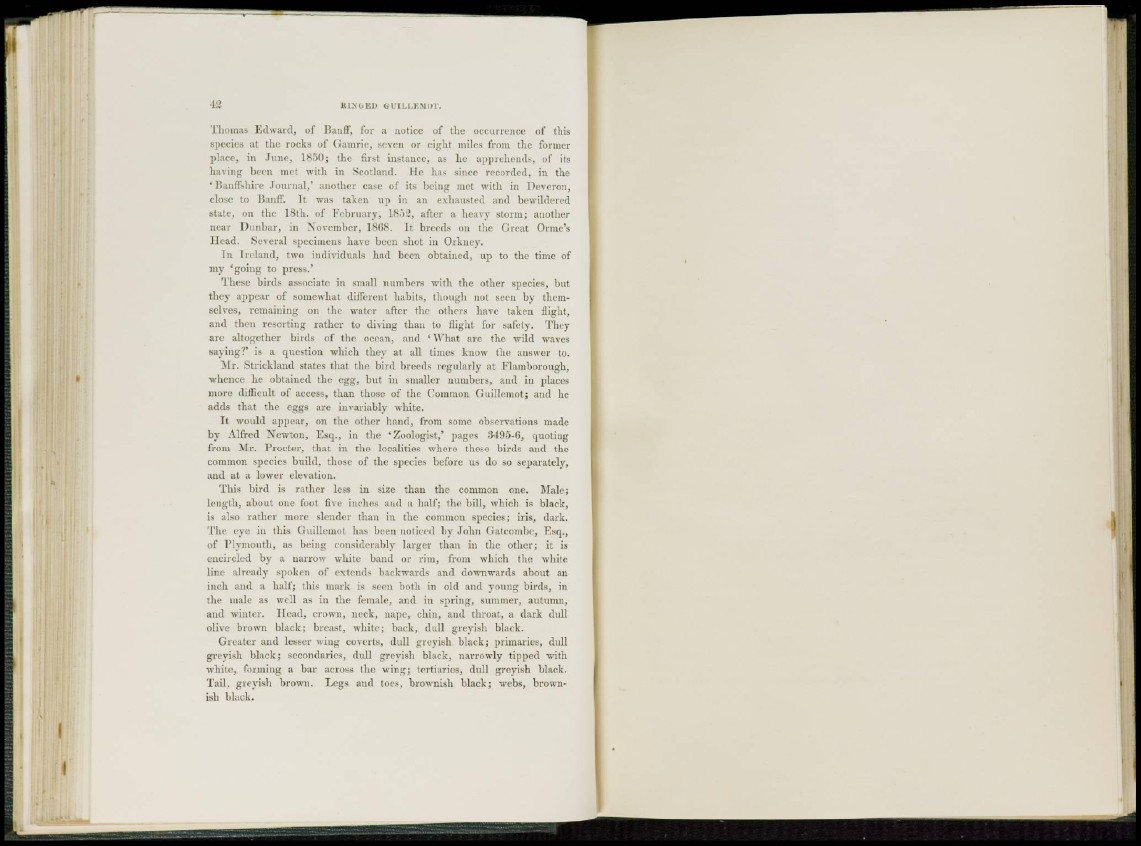
42 RINGED GUILLEMOT,
Thomas Edward, of Banff, for a notice of the occurrence of this
species at the rocks of Gamric, seven or eight miles from the former
place, in June, 1850; the first instance, as he apprehends, of its
having been met with in Scotland. He has since recorded, in the
' Banffshire J o u r n a l , ' another case of its being met with in Deveron,
close to Banff. It was taken up in an exhausted and bewildered
state, on the 18th. of February, 1852, after a heavy storm; another
near Dunbar, in November, 1868. It breeds on the Great Orme's
Head. Several specimens have been shot in Orkney.
In I n l a n d , two individuals had been obtained, up to the time of
my 'going to press.'
These birds associate in small numbers with the other species, but
they appear of somewhat different habits, though not seen by themselves,
remaining on the water after the others have taken night,
and then resorting rather to diving than to flight for safety. They
a r e altogether birds of the ocean, and * W h a t arc the wild waves
saying?' is a question which they at all times know the answer to.
Mr. Strickland states that the bird breeds regularly at Flamborough,
whence ho obtained the egg, but in smaller numbers, and in places
more difficult of access, than those of the Common Guillemot; and he
adds that the cg'gs are invariably white.
I t would appear, on the other hand, from some observations made
by Alfred Newton, Esq., in the * Zoologist,' pages 3495-(>, quoting
from 3Ir. Frocter, that in the localities where these birds and the
common species build, those of the species before us do so separately,
a n d at a lower elevation.
This bird is rather less in size than the common one. Male;
length, about one foot five inches and a half; the bill, which is black,
is also rather more slender than in the common species; iris, dark.
The eye in this Guillemot has been noticed by J o h n Gatcombe, Esq.,
of Plymouth, as being considerably larger than in the other; it is
encircled by a narrow white band or rim, from which the white
line already spoken of extends backwards and downwards about an
inch and a half; this mark is seen both in old and young birds, in
the male as well as in the female, and in spring, summer, autumn,
and winter. Head, crown, neck, nape, chin, and throat, a dark dull
olive brown black; breast, white; back, dull greyish black.
Greater and lesser wing coverts, dull greyish black; primaries, dull
greyish black; secondaries, dull greyish black, narrowly tipped with
white, forming a bar across the wing; tertiaries, dull greyish black.
Tail, grovisli brown. Legs and toes, brownish black; webs, brownish
black.